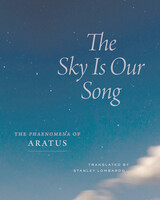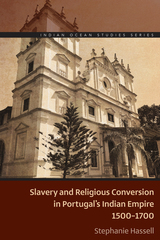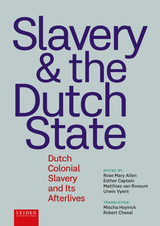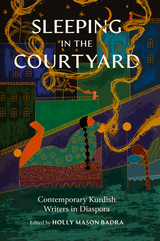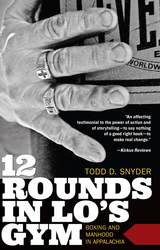
Part love letter to Appalachia, part rigorous social critique, readers may find 12 Rounds in Lo’s Gym—and its narrative of individual and community strength in the face of globalism’s headwinds—a welcome corrective to popular narratives that blame those in the region for their troubles.
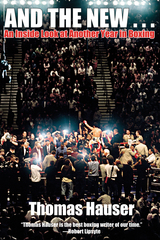
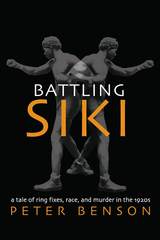
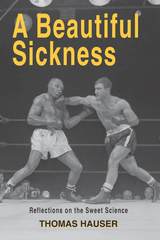
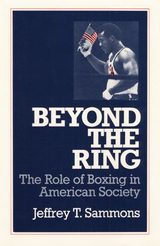
Primitive, dangerous, low-paying, crooked, exploitive--boxing, in all but a few cases, offered its athletes very little while taking everything. Why does boxing exist? What accounted for its decades-long popularity? What does its presence on the sport history landscape say about America?
Jeffrey T. Sammons looks at how boxing reflected the society that fostered it at different points in history. In the time of John L. Sullivan, the sport provided an arena for testing law, order, and social growth. Jack Johnson's career reflected the racism, nationalism, and xenophobia of the Progressive era. At its popular peak in the 1920s, boxing expressed tensions as disparate as the tug-of-war between modernism and tradition and the women's rights movement. From there, Sammons traces how the sport intertwined with Nazi antisemitism, reflected the hopes of the New Deal, produced the seminal figure Joe Louis, and stood at the nexus of the union of organized crime with business and television. Finally, he shows how Muhammad Ali and reactions to him exposed the shifting tides of racial issues and American involvement in Vietnam.
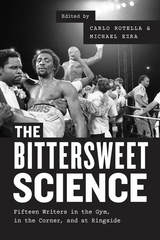
Editors Carlo Rotella and Michael Ezra have assembled a roster of fresh voices, ones that expand our understanding of the sport’s primal appeal. The contributors to The Bittersweet Science—journalists, fiction writers, fight people, and more—explore the fight world's many aspects, considering boxing as both craft and business, art form and subculture. From manager Charles Farrell’s unsentimental defense of fixing fights to former Golden Glover Sarah Deming’s complex profile of young Olympian Claressa Shields, this collection takes us right into the ring and makes us feel the stories of the people who are drawn to—or sometimes stuck in—the boxing world. We get close-up profiles of marquee attractions like Bernard Hopkins and Roy Jones Jr., as well as portraits of rising stars and compelling cornermen, along with first-person, hands-on accounts from fighters’ points of view. We are schooled in not only how to hit and be hit, but why and when to throw in the towel. We experience the intimate immediacy of ringside as well as the dim back rooms where the essentials come together. And we learn that for every champion there’s a regiment of journeymen, dabblers, and anglers for advantage, for every aspiring fighter, a veteran in painful decline.
Collectively, the perspectives in The Bittersweet Science offer a powerful in-depth picture of boxing, bobbing and weaving through the desires, delusions, and dreams of boxers, fans, and the cast of managers, trainers, promoters, and hangers-on who make up life in and around the ring.
Contributors: Robert Anasi, Brin-Jonathan Butler, Donovan Craig, Sarah Deming, Michael Ezra, Charles Farrell, Rafael Garcia, Gordon Marino, Louis Moore, Gary Lee Moser, Hamilton Nolan, Gabe Oppenheim, Carlo Rotella, Sam Sheridan, and Carl Weingarten.
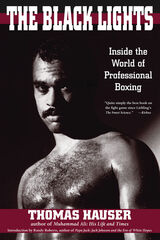
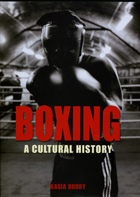
Looking afresh at everything from neoclassical sculpture to hip-hop lyrics, Boddy explores the ways in which the history of boxing has intersected with the history of mass media. Boddy pulls no punches, looking to the work of such diverse figures as Henry Fielding and Spike Lee, Charlie Chaplin and Philip Roth, James Joyce and Mae West, Bertolt Brecht and Charles Dickens in an all-encompassing study that tells us just how and why boxing has mattered so much to so many.

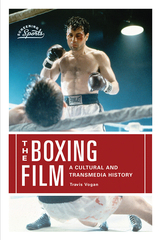
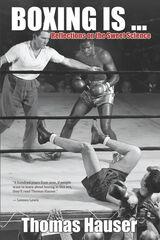
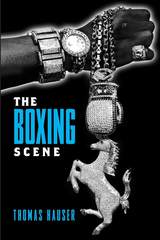
Thomas Hauser has been called “one of boxing’s greatest writers. The Boxing Scene, Hauser’s provocative new anthology, contains all of his trademark insights and candor as he peels away layers of hypocrisy to reveal the men who make up the contemporary boxing landscape.
Hauser exposes the inner workings of HBO Sports; examines the phenomenon of mixed martial arts as it relates to boxing; and records the amusing encounter between his 81-year-old mother and larger-than-life boxing impresario Don King. The Boxing Scene also updates Hauser’s personal and professional thoughts on superstars like Oscar De La Hoya, Floyd Mayweather Jr., Ricky Hatton, Miguel Cotto, and Bernard Hopkins as well as fight promoter Bob Arum, announcer Bob Sheridan and a host of others.
The Boxing Scene recreates another year in professional boxing and adds to Hauser’s definitive record of the sport.
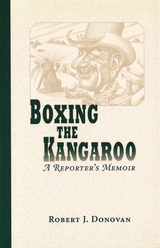
"The host had brought out a pair of boxing gloves and asked the president if any of his friends would like to indulge in the Australian sport of boxing kangaroos. Once the president of the United States had selected me, there was almost no way out, unless I ran home to tell my mother."
In Boxing the Kangaroo: A Reporter's Memoir, Robert J. Donovan shares many exciting events that highlighted his stellar journalistic career. As an investigative reporter during five presidential administrations, Donovan has had many "insider" experiences. His memoir delightfully humanizes each of the five presidents he reported on: Truman, Eisenhower, Kennedy, Johnson, and Nixon.
Donovan began his career working as a night copyboy for the Buffalo Courier-Express, earning seven dollars a week. In 1937, he got a job as a reporter for the New York Herald Tribune, where he worked for many years. By 1942 the Herald Tribune had assigned Donovan to cover City Hall and the lively activities of Fiorello La Guardia. After his service in World War II he returned to the Herald Tribune to cover the man from Missouri who followed FDR. Ultimately, Donovan served as chief of the New York Herald Tribune Washington bureau and the Los Angeles Times Washington bureau.
Donovan traveled across the country with Harry S. Truman during his "Give 'Em Hell, Harry" campaign. He covered Dwight D. Eisenhower's election, about which he says there was never a doubt--Ike, the war hero, mesmerized the country. He was a personal friend of John F. Kennedy, having written about the President's PT-109 heroics in World War II, and was on the scene the day Kennedy was assassinated: "The drama in the second press bus, in which I rode in the presidential motorcade in Dallas, is unforgettable. `Why has the motorcade stopped?' a reporter asked as we drew near the Texas School Book Depository. . . . `I heard a shot,' another said. A voice in the rear contradicted him. `That was a motorcycle backfiring.'" Donovan would find out shortly before the rest of the world that, in fact, it was not a motorcycle backfiring, but the firing of an assassin's bullet that killed the nation's thirty-fifth president.
Boxing the Kangaroo is one of the best "I was there" accounts of American history. This fascinating book will appeal to journalists, American history buffs, and the general reader alike.
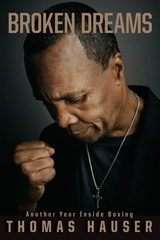
Each year, readers, writers, and critics alike look forward to Thomas Hauser’s newest collection of articles about the contemporary boxing scene. As Booklist has proclaimed, “Many journalists have written fine boxing pieces, but none has written as extensively or as memorably as Thomas Hauser. . . . Hauser remains the current champion of boxing. . . . Hauser is a treasure.”
Broken Dreams meets this high standard with its coverage of 2020’s most important fighters and fights, outside-the-ring controversies, regulatory missteps, and other issues that defined the year’s boxing scene. Hauser explores the heavyweight trio of Tyson Fury, Anthony Joshua, and Deontay Wilder in depth, as well as Canelo Álvarez and historic greats like Jack Dempsey, Carlos Monzon, and Muhammad Ali.
Hauser also tackles the larger social challenges that imposed themselves so assertively in 2020, including the coronavirus pandemic, the Black Lives Matter movement, runaway social media, the presidential election, and other forces that left a deep imprint on the sport and business of boxing.
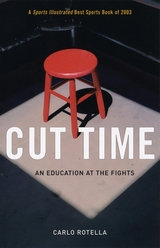
Tracing the consequences of hurt and craft, the two central facts of boxing, Rotella reveals moving resonances between the worlds inside and outside the ropes. The brief, disastrous fistic career of one of his students pinpoints the moment when adulthood arrives; the hard-won insight of a fellow fan shows Rotella how to reckon with a car crash. Mismatches, resilience, pride, pain, and aging—Rotella's lessons from the ring extend far beyond the sport. In Cut Time, Rotella achieves the near-impossible: he makes the fight world relevant to us, whether we're fans or not.
"Cut Time should be read not just by fight aficionados but also by fans of intelligent nonfiction writing. . . . An absorbing read."—Sports Illustrated
"Just when you think it's all been written, a good writer takes a shining new look at an old subject and breathes life into it. . . . Rotella has preserved the blow-by-blow and the grandeur of another age but has somehow expanded the ring to include his own generation's proclivities and sensibility."—Los Angeles Times
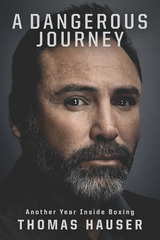
A Dangerous Journey continues Hauser’s tradition of excellence, turning his award-winning investigative reporting skills on the scandal surrounding the use of illegal performance enhancing drugs and the failures of corrupt and incompetent state athletic commissions. Hauser also takes readers into Canelo Alvarez’s dressing room in the hours before and after his rematch against Gennady Golovkin, the biggest fight of the year, and offers in-depth portraits of boxing’s biggest stars—past and present—as well as reflections on fight-related curiosities ranging from Ronda Rousey to David and Goliath.
Thirty-five years ago, Hauser began writing about boxing with his superb The Black Lights, which has long been regarded as a boxing classic. He only gets better.

In this striking poetry collection, Red Shuttleworth, who holds the record as the oldest active boxer (professional or amateur), offers evocative imagery that unapologetically reveals the life of a boxer. From the inspiring hopes of an early career to agonizing defeats, the poems in Eclipse of the Sun take readers on a journey from moderate successes to the realization that a dream of a promising future has become the reality of the long haul of a journeyman. Along the way, Shuttleworth rubs elbows with greats like Muhammad Ali, Chickie Ferrara, and Ron Lyle, exposing the resolute path and difficult end of a hard-lived life.
This collection is an homage to boxing at its grittiest levels, and to fighters who persevere—with hope, blood, and bone—against sense and loss. Few professional boxers earn a living in the ring, and even fewer arrive in their forties with any money left from their sport. In this collection, boxers attain poverty rather than riches, end up in post-career menial jobs, and have no pension plan to fall back on. Shuttleworth’s poetry is a visceral inside look at the brutality and humanity at the heart of boxing.
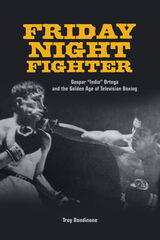
Friday Night Fighter relives a lost moment in American postwar history, when boxing ruled as one of the nation's most widely televised sports. During the 1950s and 1960s, viewers tuned in weekly, sometimes even daily, to watch widely recognized fighters engage in primordial battle; the Gillette Cavalcade of Sports Friday Night Fights was the most popular fight show. Troy Rondinone follows the dual narratives of the Friday Night Fights show and the individual story of Gaspar "Indio" Ortega, a boxer who appeared on prime-time network television more than almost any other boxer in history. From humble beginnings growing up poor in Tijuana, Mexico, Ortega personified the phenomenon of postwar boxing at its greatest, appearing before audiences of millions to battle the biggest names of the time, such as Carmen Basilio, Tony DeMarco, Chico Vejar, Benny "Kid" Paret, Emile Griffith, Kid Gavilan, Florentino Fernández, and Luis Manuel Rodriguez.
Rondinone explores the factors contributing to the success of televised boxing, including the rise of television entertainment, the role of a "reality" blood sport, Cold War masculinity, changing attitudes toward race in America, and the influence of organized crime. At times evoking the drama and spectacle of the Friday Night Fights themselves, this volume is a lively examination of a time in history when Americans crowded around their sets to watch the main event.
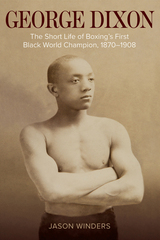
Winner, 2022 NASSH Book Award (Monograph)
On September 6, 1892, a diminutive Black prizefighter brutally dispatched an overmatched white hope in the New Orleans Carnival of Champions boxing tournament. That victory sparked celebrations across Black communities nationwide but fostered unease among sporting fans and officials, delaying public acceptance of mixed-race fighting for half a century. This turn echoed the nation’s disintegrating relations between whites and Blacks and foreshadowed America’s embrace of racial segregation.
In this work of sporting and social history we have a biography of Canadian-born, Boston-raised boxer George Dixon (1870–1908), the first Black world champion of any sport and the first Black world boxing champion in any division. George Dixon: The Short Life of Boxing’s First Black World Champion, 1870–1908 chronicles the life of the most consequential Black athlete of the nineteenth century and details for the first time his Carnival appearance, perhaps the most significant bout involving a Black fighter until Jack Johnson began his reign in 1908. Yet despite his triumphs, Dixon has been lost to history, overshadowed by Black athletes whose activism against white supremacy far exceeded his own.
George Dixon reveals the story of a man trapped between the white world he served and the Black world that worshipped him. By ceding control to a manipulative white promoter, Dixon was steered through the white power structure of Gilded Age prizefighting, becoming world famous and one of North America’s richest Black men. Unable to hold on to his wealth, however, and battered by his vices, a depleted Dixon was abandoned by his white supporters just as the rising tide of Jim Crow limited both his prospects and the freedom of Blacks nationwide.
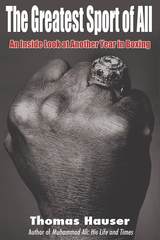
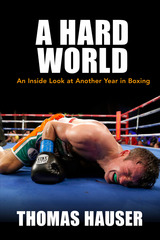
In 2015, Booklist observed, “the arrival of Hauser’s annual boxing review is akin to Christmas morning for fight fans. Nobody knows a sport any better than Hauser knows boxing.”
Each year, readers, writers, and critics alike look forward to Thomas Hauser’s annual collection of articles about the contemporary boxing scene. He’s one of the last real champions of boxing and one of the very best who has ever written about the sport.
A Hard World continues this tradition of excellence with dressing-room reports from big fights like Canelo Alvarez vs. Miguel Cotto, a behind-the-scenes look at Floyd Mayweather vs. Manny Pacquiao, and a foray into the world of mixed martial arts for a compelling portrait of Ronda Rousey. Most importantly, this new collection contains Hauser’s groundbreaking two-part investigative report on the relationship between the United States Anti-Doping Agency and boxing, a report that shook the industry and raised fundamental questions regarding the integrity of USADA’s drug-testing procedures as applied to boxing.

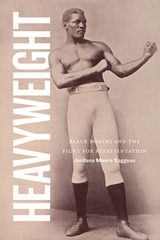
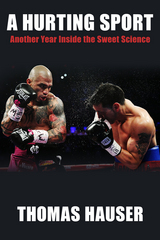
Other sportswriters have called Hauser “the dean of fightwriters” (TheSweetScience.com) and “our craft’s most celebrated practitioner” (15Rounds.com). His readers call him one of the last real champions in boxing and one of the very best who has ever written about this sport.
A Hurting Sport continues this tradition of excellence with a behind-the-scenes recounting of 2014’s biggest fights, a look at Floyd Mayweather’s conduct in and out of the ring, analysis of fight impresario Al Haymon’s burgeoning empire, and much more.
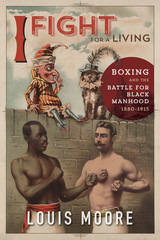
Louis Moore draws on the life stories of African American fighters active from 1880 to 1915 to explore working-class black manhood. As he details, boxers bought into American ideas about masculinity and free enterprise to prove their equality while using their bodies to become self-made men. The African American middle class, meanwhile, grappled with an expression of public black maleness they saw related to disreputable leisure rather than respectable labor. Moore shows how each fighter conformed to middle-class ideas of masculinity based on his own judgment of what culture would accept. Finally, he argues that African American success in the ring shattered the myth of black inferiority despite media and government efforts to defend white privilege.
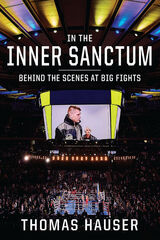
When Thomas Hauser was selected for induction into the International Boxing Hall of Fame in 2019, his relationship with Muhammad Ali was widely cited. But Ali was just one of the many fighters who have shared momentous times with Hauser. For decades, elite fighters like Evander Holyfield, Manny Pacquiao, Roy Jones Jr., Bernard Hopkins, Ricky Hatton, Kelly Pavlik, Sergio Martínez, Jermain Taylor, Miguel Cotto, Gennady Golovkin, and Canelo Álvarez have welcomed him into their dressing rooms to record their journeys on fight night.
Gathering and updating more than thirty essays from Hauser’s critically acclaimed yearly collections, In the Inner Sanctum celebrates these most dramatic hours in boxers’ lives. In each account, Hauser chronicles the very moment when a fighter’s physical well-being and financial future are on the line—when the fighter is most at risk and most alive.
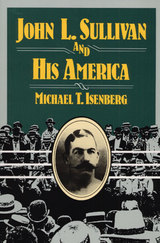
The "Great John L." reigned supreme as world heavyweight champion from his victory over Paddy Ryan in 1882 until James J. Corbett knocked him out in 1892. A drunkard, a wastrel, an adulterer, a wife beater, and a bully, Sullivan still became American's first national sports hero and represented the hopes and aspirations of millions of people.
Michael Isenberg traces Sullivan's eventful life from his humble beginnings in Boston to the height of his immense popularity. The boxer moved as easily in the world of reputable workingmen as he did in the shadowlands on the margins of the sport while his success played a major role in transforming boxing into a profitable and ultimately legitimate business. Tapping previously unexplored archival material--including the notorious National Police Gazette and the other sporting papers of the day--Isenberg tells us why presidents, princes, and turn-of-the-century Americans accepted Sullivan as a hero, even as others vilified him for his drunken and belligerent behavior.
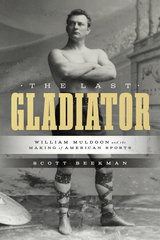
The incredible career of the forgotten but foundational pro wrestler who shaped American sports culture.
William Muldoon was an infamous athlete whose prowess and savvy across his six-decade career led him to wealth, cultural importance, and political power. Muldoon, the child of poor Irish immigrants, began wrestling in the 1870s and quickly became one of the most famous athletes of the post-Civil War era. He started acting and modeling as his popularity grew, making him one of the first sports stars to achieve crossover success. After a triumphant stint rehabilitating fallen boxing heavyweight champion John L. Sullivan in 1889, he retired from the ring and began a new career as a fitness impresario, founding an elite gymnasium and remaking himself as a health authority in the press. He became trainer to the rich, famous, and politically powerful, which led to his appointment as chair of the New York State Athletic Commission in the 1920s. From this position, Muldoon exerted his influence over the rules of boxing and wrestling and weaponized his power to maintain segregation in sport.
The Last Gladiator is a deep, insightful dive into Muldoon’s life and impact, demonstrating the significance of this often-controversial figure in the development of American sports, professional wrestling, and physical and popular culture.
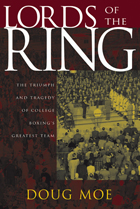
Under legendary and beloved coach John Walsh, the most successful coach in the history of American collegiate boxing, University of Wisconsin boxers won eight NCAA team championships and thirty-eight individual titles from 1933 to 1960. Badger boxers included heroes like Woody Swancutt, who later helped initiate the Strategic Air Command, and rogues like Sidney Korshak, later the most feared mob attorney in the United States. A young fighter from Louisville named Cassius Clay also boxed in the Wisconsin Field House during this dazzling era.
But in April 1960, collegiate boxing was forever changed when Charlie Mohr— Wisconsin’s finest and most popular boxer, an Olympic team prospect—slipped into a coma after an NCAA tournament bout in Madison. Suddenly, not just Mohr’s life but the entire sport of college boxing was in peril. It was to be the last NCAA boxing tournament ever held. Lords of the Ring tells the whole extraordinary story of boxing at the University of Wisconsin, based on dozens of interviews and extensive examination of newspaper microfilm, boxing records and memorabilia.
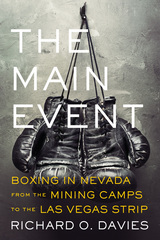
As the twentieth century dawned, bare-knuckle prizefighting was transforming into the popular sport of boxing, yet simultaneously it was banned as immoral in many locales. Nevada was the first state to legalize it, in 1897, solely to stage the Corbett-Fitzsimmons world heavyweight championship in Carson City. Davies shows that the history of boxing in Nevada is integral to the growth of the sport in America. Promoters such as Tex Rickard brought in fighters like Jack Dempsey to the mining towns of Goldfield and Tonopah and presented the Johnson-Jeffries “Fight of the Century” in Reno in 1910. Prizefights sold tickets, hotel rooms, drinks, meals, and bets on the outcomes. It was boxing\--before gambling, prostitution, and easy divorce\--that first got Nevada called “America’s Disgrace” and the “Sin State.” The Main Event explores how boxing’s growth in Nevada relates to the state’s role as a social and cultural outlier. Starting in the Rat Pack era, organized gambling’s moguls built arenas outside the Vegas casinos to stage championships\--more than two hundred from 1960 to the present. Tourists and players came to see and bet on historic bouts featuring Sonny Liston, Muhammad Ali, George Foreman, Sugar Ray Leonard, Mike Tyson, and other legends of the ring.
From the celebrated referee Mills Lane to the challenge posed by mixed martial arts in contemporary Las Vegas, the story of boxing in Nevada is a prism for viewing the sport. Davies utilizes primary and secondary sources to analyze how boxing in the Silver State intersects with its tourist economy and libertarian values, paying special attention to issues of race, class, and gender. Written in an engaging style that shifts easily between narrative and analysis, The Main Event will be essential reading for sports fans and historians everywhere.
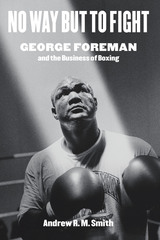
Olympic gold medalist. Two-time world heavyweight champion. Hall of Famer. Infomercial and reality TV star. George Foreman’s fighting ability is matched only by his acumen for selling. Yet the complete story of Foreman’s rise from urban poverty to global celebrity has never been told until now.
Raised in Houston’s “Bloody Fifth” Ward, battling against scarcity in housing and food, young Foreman fought sometimes for survival and other times just for fun. But when a government program rescued him from poverty and introduced him to the sport of boxing, his life changed forever.
In No Way but to Fight, Andrew R. M. Smith traces Foreman’s life and career from the Great Migration to the Great Society, through the Cold War and culture wars, out of urban Houston and onto the world stage where he discovered that fame brought new challenges. Drawing on new interviews with George Foreman and declassified government documents, as well as more than fifty domestic and international newspapers and magazines, Smith brings to life the exhilarating story of a true American icon. No Way but to Fight is an epic worthy of a champion.
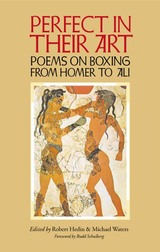
Two combatants, one ring, and a battle governed as much by determination and drive as by rules and referees: that’s boxing. Perfect in Their Art: Poems on Boxing from Homer to Ali spans the millennia to present more than one hundred of the finest in pugilism poetry from both oral and written traditions, celebrating the lasting literary, historical, and cultural significance of boxing’s storied heritage.
Editors Robert Hedin and Michael Waters pulled no punches in assembling the definitive poems and poets of the sport. Works by such classical poets as Homer, Virgil, and Pindar are gathered here side-by-side for the first time with the poems of Lord Byron, William Makepeace Thackeray, and Sir Arthur Conan Doyle. This provocative collection also features more recent literary heavyweights, including Langston Hughes, Maya Angelou, Joyce Carol Oates, Philip Levine, Wislawa Szymborska, Ai, Yusef Komunyakaa, James Merrill, and Norman Mailer. Equally impressive is this anthology’s rich sampling of boxing music, including ballads, blues, marches, waltzes, and pop lyrics. Irving Berlin, Memphis Minnie, Leadbelly, Paul Simon, Warren Zevon, and Bob Dylan are only a few of the songwriters in this volume compelled to honor the sweet science.
Complemented by a foreword from On the Waterfront author Budd Schulberg, Perfect in Their Art offers glimpses into the boxing ring’s literal and metaphoric place as a popular stage for brutal but artful combat. Together these poems celebrate the heroes and traditions of this most primal competition across its many eras to provide an accurate, graceful, and spirited evocation of boxing’s cultural legacy as both sport and art.
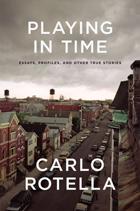
Rotella is best known for his writings on boxing, and his essays here do not disappoint. It’s a topic that he turns to for its colorful characters, compelling settings, and formidable life lessons both in and out of the ring. He gives us tales of an older boxer who keeps unretiring and a welterweight who is “about as rich and famous as a 147-pound fighter can get these days,” and a hilarious rumination on why Muhammad Ali’s phrase “I am the greatest” began appearing (in the mouth of Epeus) in translations of The Iliad around 1987. His essays on blues, crime and science fiction writers, and urban spaces are equally and deftly engaging, combining an artist’s eye for detail with a scholar’s sense of research, whether taking us to visit detective writer George Pelecanos or to dance with the proprietress of the Baby Doll Polka Club next to Midway Airport in Chicago.
Rotella’s essays are always smart, frequently funny, and consistently surprising. This collection will be welcomed by his many fans and will bring his inimitable style and approach to an even wider audience.
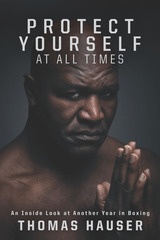
—Booklist
Each year, readers, writers, and critics alike anticipate Thomas Hauser’s newest collection of articles about the contemporary boxing scene, where his award-winning investigative journalism is on display. The annual retrospective of the previous year in boxing is always a notable moment in the sport that no one knows better than Hauser.
Protect Yourself at All Times offers a behind-the-scenes look at Floyd Mayweather vs. Conor McGregor, dressing room reports from big fights like Canelo Alvarez vs. Gennady Golovkin, and compelling portraits of luminaries like Muhammad Ali, Joe Louis, Mike Tyson, and Don King, all filtered through the perspective of a true champion of boxing.

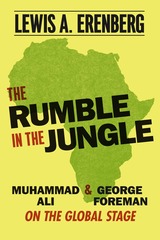
TheRumble in the Jungle orbits around Ali and Foreman, placing them at the convergence of the American Civil Rights movement and the Great Society, the rise of Islamic and African liberation efforts, and the ongoing quest to cast off the shackles of colonialism. With his far-reaching take on sports, music, marketing, and mass communications, Erenberg shows how one boxing match became nothing less than a turning point in 1970s culture.
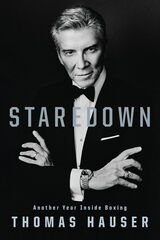
Staredown continues this tradition of excellence with inside reporting from the dressing room before some of last year’s biggest fights, in-depth investigations into corruption in boxing, and more. Hauser also moves beyond the norm to explore incidents like street fights and examine boxing’s storied history in new and creative ways.
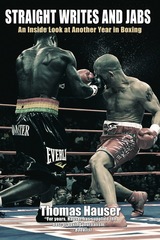
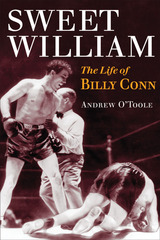
An Irish working-class hero of Pittsburgh, Billy Conn captured hearts through his ebullient personality, stellar boxing record, and good looks. A light heavyweight boxing champion best remembered for his sensational near-defeat of heavyweight champion Joe Louis in 1941, Conn is still regarded as one of the greatest fighters of all time. Andrew O'Toole chronicles the boxing, Hollywood, and army careers of "the Pittsburgh Kid" by drawing from newspaper accounts, Billy's personal scrapbooks, and fascinating interviews with family. Presenting an intimate look at the champion's relationships with his girlfriend, manager, and rivals, O'Toole compellingly captures the personal life of a public icon and the pageantry of sports during the 1930s and '40s.

There Will Always Be Boxing continues this tradition of excellence. A poignant look at Muhammad Ali—whose life was celebrated throughout the world following his death on June 3, 2016—highlights this collection of Hauser’s work. The year’s biggest fights are, as always, put in perspective. And once again, Hauser takes readers behind the scenes, giving them a seat at the table with boxing’s biggest power brokers as he reveals the inner workings of the sport and business of boxing.
There Will Always Be Boxing is sure not to disappoint the readers, writers, and critics who look forward to Hauser’s annual collection of articles about the contemporary boxing scene. This collection shows, once again, why Hauser is one of the last real champions of boxing and one of the very best who has ever written about the sport.
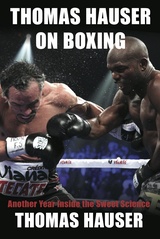
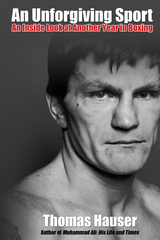
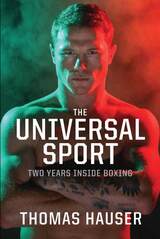
Hauser’s newest collection meets this high standard. The Universal Sport features Hauser’s coverage of 2021 and 2022 in boxing. As always, Hauser chronicles the big fights and gives readers a behind-the-scenes look at boxing’s biggest stars. He offers a cogent look the rise of women’s boxing and shines a penetrating light on the murky world of illegal performance enhancing drugs and financial corruption at the sport’s highest levels. He explores how boxing has become a tool in the high-stakes world of “sportswashing” by Saudi Arabia and a flash point for discussions about Russia’s brutal invasion of Ukraine. The book culminates in a memorable four-part essay on the craft of writing coupled with reflections on Hauser’s own induction into the International Boxing Hall of Fame.
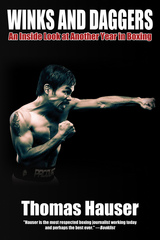
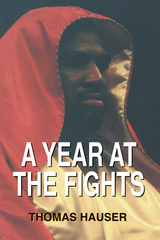
Acclaimed boxing writer Thomas Hauser admires the sweet science, but he also recognizes and confronts its problems. His essays here portray the sport in all its glory and gore, its grace and disgrace.
Hauser tracks the effects of big money on the sport, exposes corruption at the highest levels, and examines the emotional links between the September 11 attack on America and the way we experience the violence of boxing. He follows the biggest fighters and the most important fights through 2001 into the early months of 2002. He also depicts the broadcasters, government regulators, and others-the people behind the scenes who shape boxing without ever taking a punch. We meet fighters such as Lennox Lewis, Mike Tyson, and Bernard Hopkins, and non-combatants like ringside physician Margaret Goodman, trainer Eddie Futch, and the powers that be at HBO.
Praise for Thomas Hauser’s writing about professional boxing:
New York Times: Incomparable and indispensable.
Washington Post: Brilliantly crafted.
New York Daily News:The best writing so far on the business of boxing.
Boxing Collectors’ News: A. J. Liebling’s current-day successor.
Ring Magazine: No one has ever done it better.
READERS
Browse our collection.
PUBLISHERS
See BiblioVault's publisher services.
STUDENT SERVICES
Files for college accessibility offices.
UChicago Accessibility Resources
home | accessibility | search | about | contact us
BiblioVault ® 2001 - 2025
The University of Chicago Press


